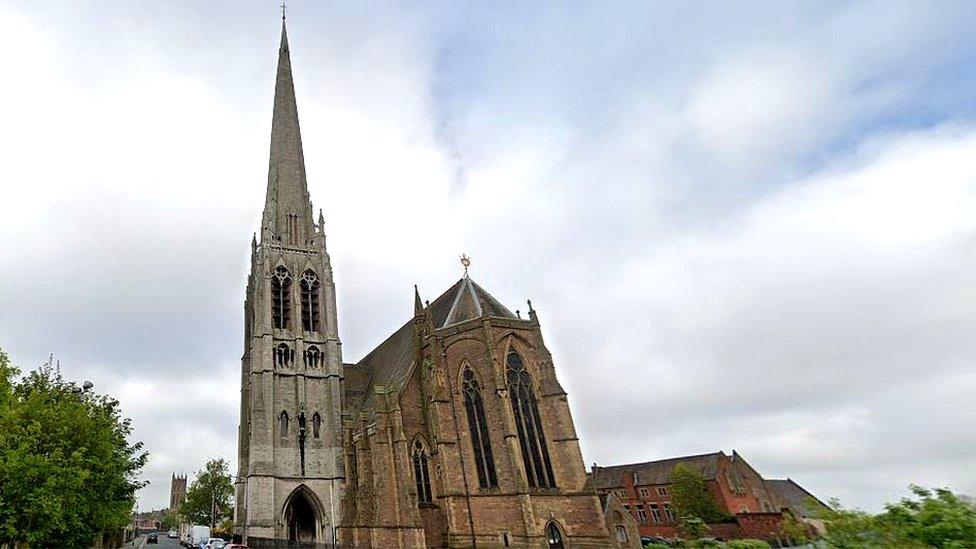North West houses, churches and tower added to Heritage at Risk Register
- Published
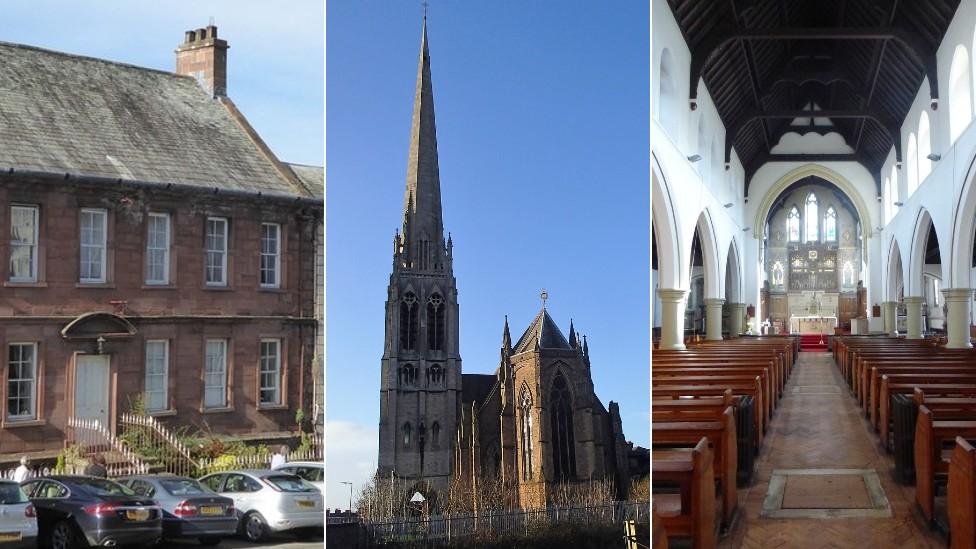
The Red House, Church of St Walburge and Church of English Martyrs have been added to the list
A Grade I-listed house, an 18th Century judge's lodgings and a church with one of the highest spires are at risk of being lost in north-west England.
The sites in Liverpool, Appleby-in-Westmorland and Preston have been added to the Heritage at Risk Register, external, along with two other churches near Chorley and Manchester and a Cumbrian tower.
A total of 372 North West sites are on Historic England's (HE) 2021 list.
HE added that several sites had also been removed in the past year.
A spokesman for the organisation said £650,000 in HE grants and almost £1.47m of "lifeline grants from the government's Culture Recovery Fund" had been handed out in the region in the past year, which had "kick-started essential repairs and maintenance at many precious historic sites".
He said the new sites had been added to the register "because of concerns about their condition".

Church of St Walburge, Preston
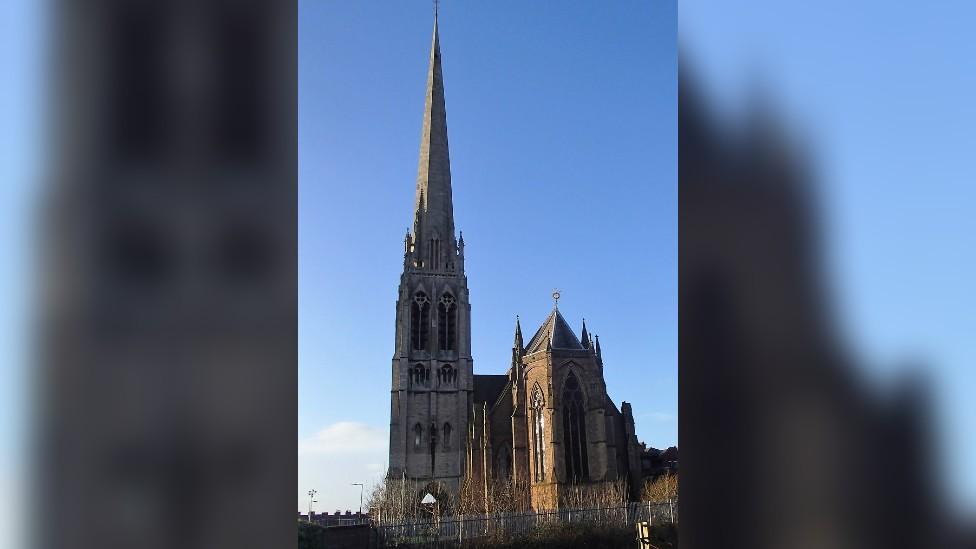
Constructed in the style of a 13th Century French Gothic building, the Grade I-listed Roman Catholic church was built in the 1850s.
Its 309ft (95m) octagonal spire, which is said to be the highest of any parish church in England, was added in 1867.
HE said its main slate roof was deteriorating with "numerous leaks and damp evident inside the building", though the full impact of the "water ingress on the historic fabric is unknown".

The Red House, Appleby-in-Westmorland
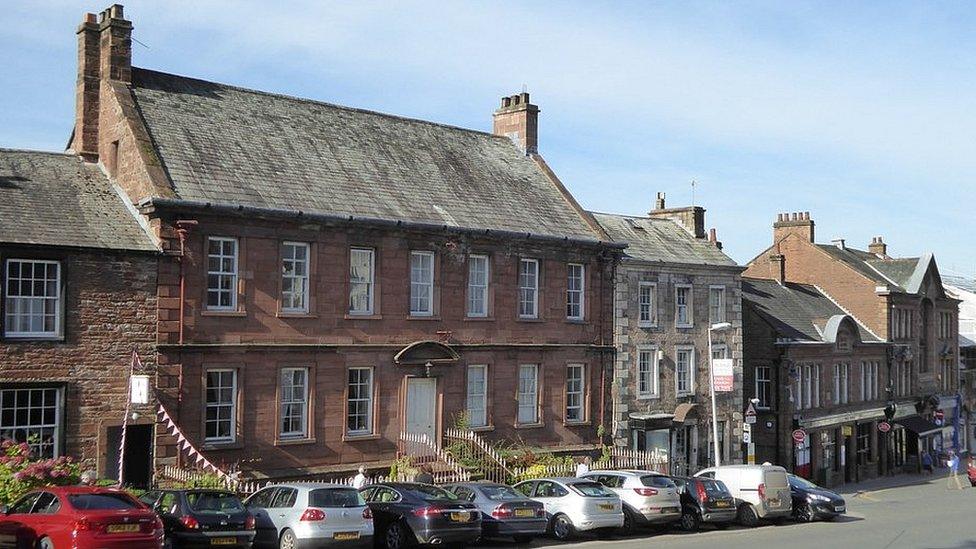
The Grade II-listed red sandstone house was built in 1717 and was formerly used as judge's lodgings.
An assessment in 2018 found it had issues with rainwater getting in through the slate roof.
HE said the "principal area of concern" was "stone decay and delamination" on the "projecting elements" of its exterior, which had been "exacerbated" by inappropriate cement pointing.

Church of English Martyrs, Manchester
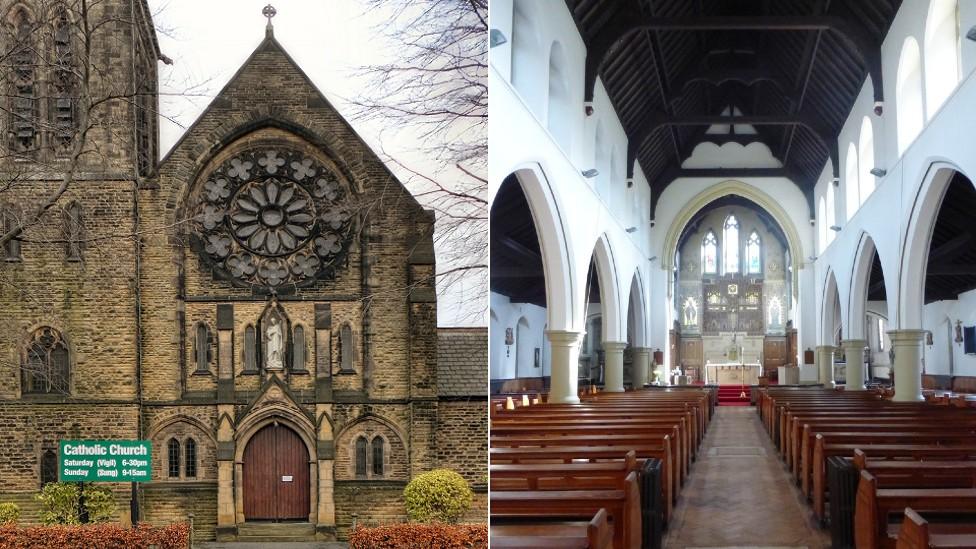
The Grade II-listed Roman Catholic church in Whalley Range was built in the 1890s in "the Early English style", HE said.
It said despite a recent reroofing project on the building's south side, there was "extensive water penetration" through the slates and related issues with the leadwork.
The organisation added that the leaks were "damaging the interior decoration" and concerns have been raised about the impact on the church's structure.

Wraysholme Tower, Lower Allithwaite
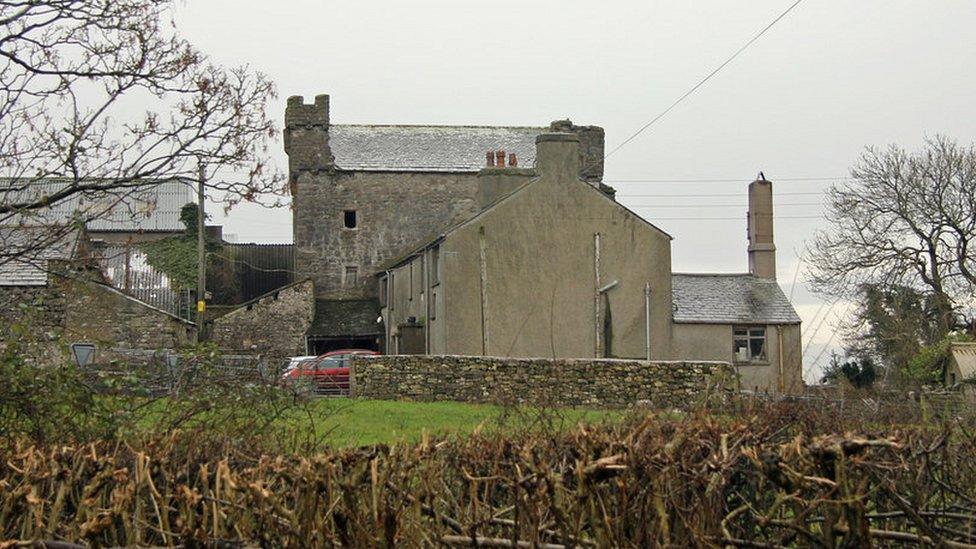
Built in the late 15th Century, Wraysholme Tower is a scheduled monument that was constructed using rubble stone masonry and has a stone slate roof dating from the 19th Century.
It was built as a pele tower, one of a number of watch towers built along the border between England and Scotland, but has been incorporated into a farm and now houses a cowshed and a barn.
HE said the location of the farmhouse "makes repairs and maintenance more challenging", but a repair project to address issues with the roof would "ensure that the need for future access is minimised".

Church of St Michael, Croston
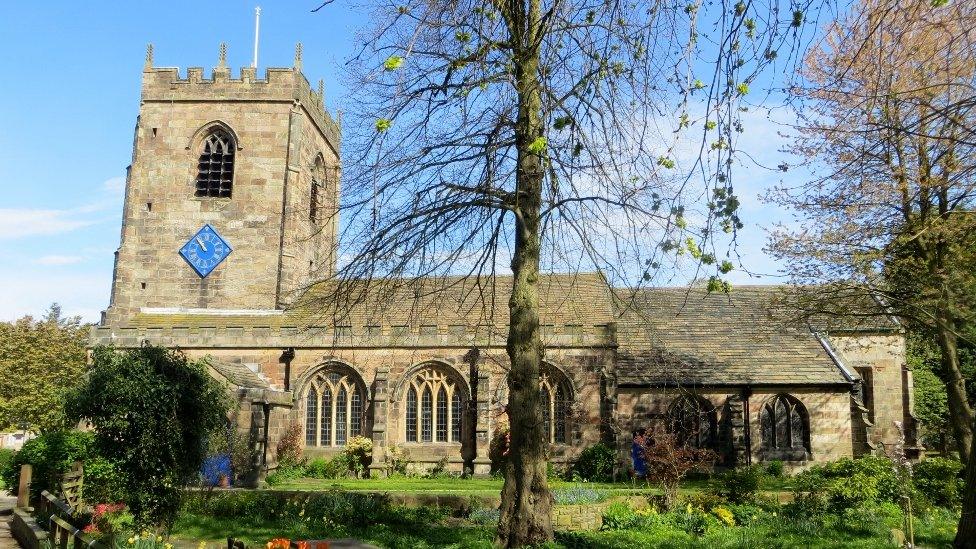
The Grade II-listed 16th Century Anglican church in Croston, near Chorley, had repairs to both its floor and roof in 2017, which was funded by the National Lottery Heritage Fund's Grants for Places of Worship scheme.
However, HE said further work was needed on its roof, as it had "deteriorated further".
It added that "delaminating stone slates and issues with leadwork" was causing the church to be vulnerable to further damage and potential "water ingress".

Woolton Hall, Liverpool
The Grade I-listed country house was built in 1704 and enlarged and refronted 70 years later, but has been in "a neglected, damp condition and vacant since approximately 2003", HE said.
The organisation said a plan by its current owners to use it "as the focus of a retirement village... have failed to get financial support and the building has continued to decline".
It added that the house, which narrowly escaped being damaged by a fire in its grounds in 2019, had been "subject to vandalism"

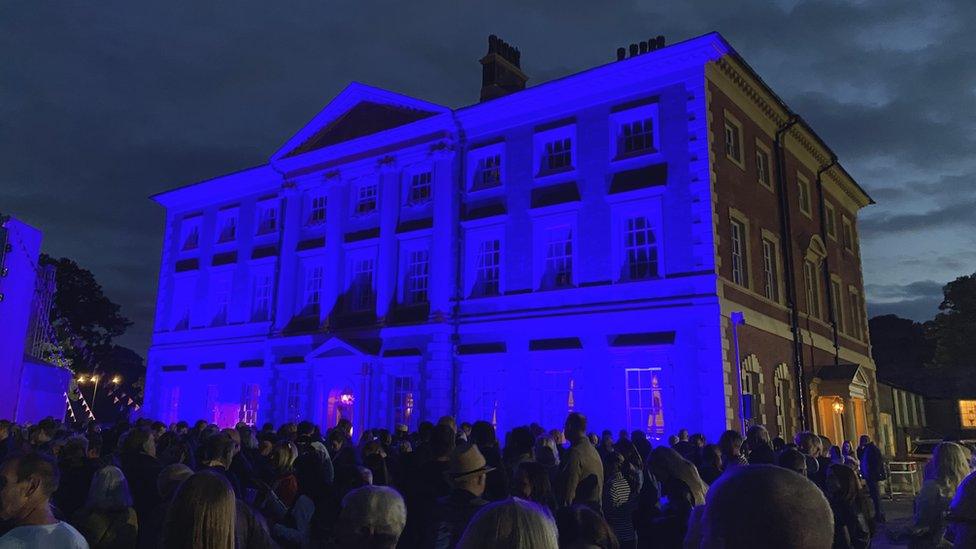
The Grade I-listed Lytham Hall was one of seven sites in the North West removed from the list
The organisation said the "yearly health-check of England's most valued historic places" had led to seven sites being taken off the register "for positive reasons".
Lytham Hall in Lancashire, Backbarrow Ironworks in the Lake District and Middlewich brine pumps in Cheshire were among those to have been "restored, re-used and brought back to life", the HE spokesman said.
"Places which were added to the register in previous years because of their deteriorating condition now have a bright future," he said.
He added that the removals were down to the "hard work and dedication of local communities" and the support of charities, owners, local councils and HE.

Why not follow BBC North West on Facebook, external, Twitter, external and Instagram, external? You can also send story ideas to northwest.newsonline@bbc.co.uk, external
- Published4 November 2021
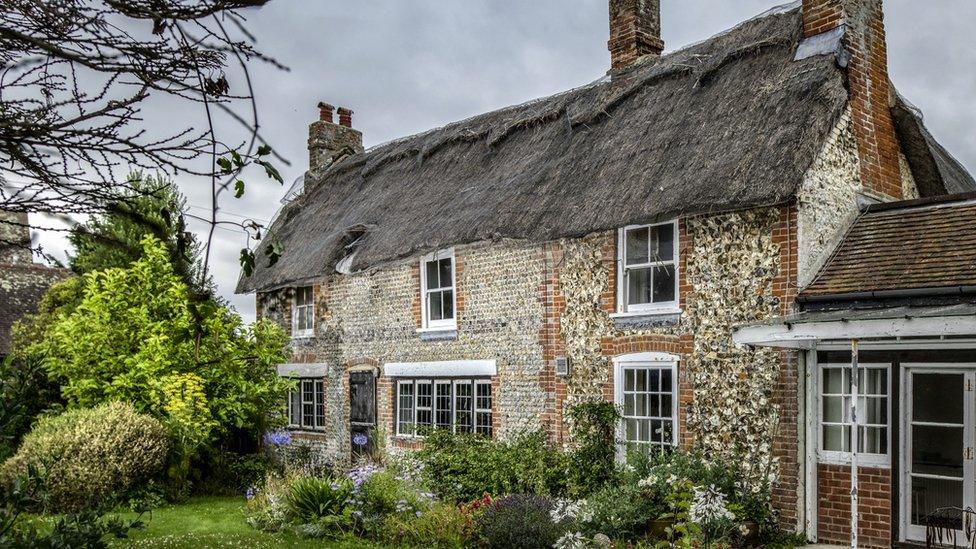
- Published4 November 2021

- Published4 November 2021
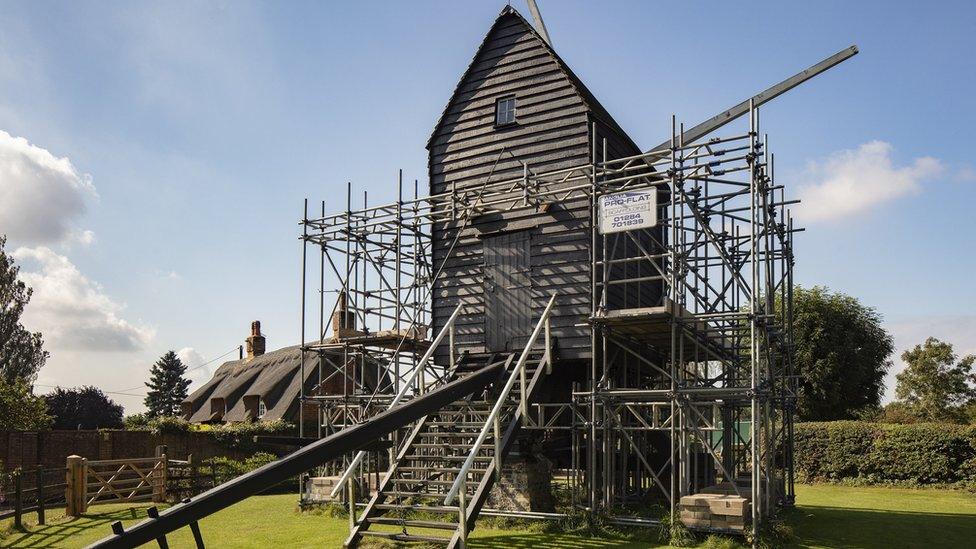
- Published4 November 2021

- Published19 June 2020
